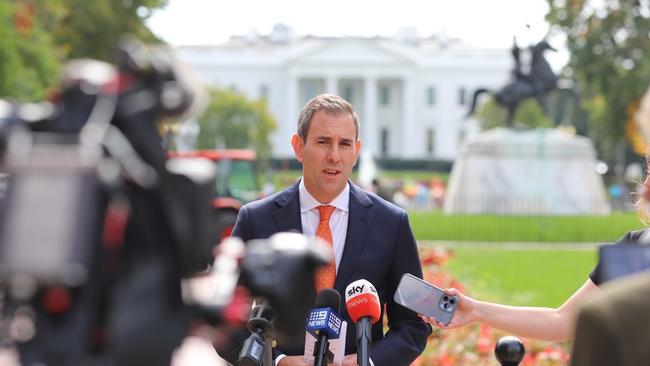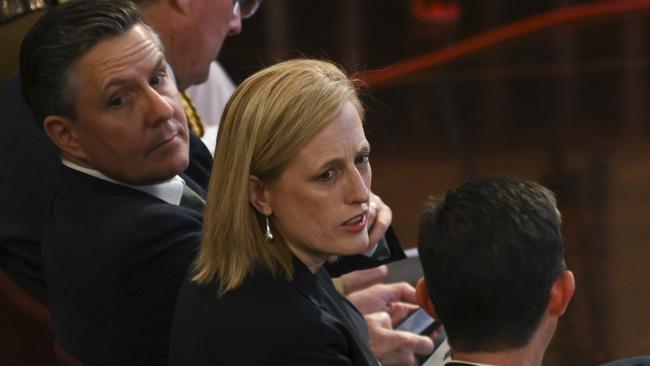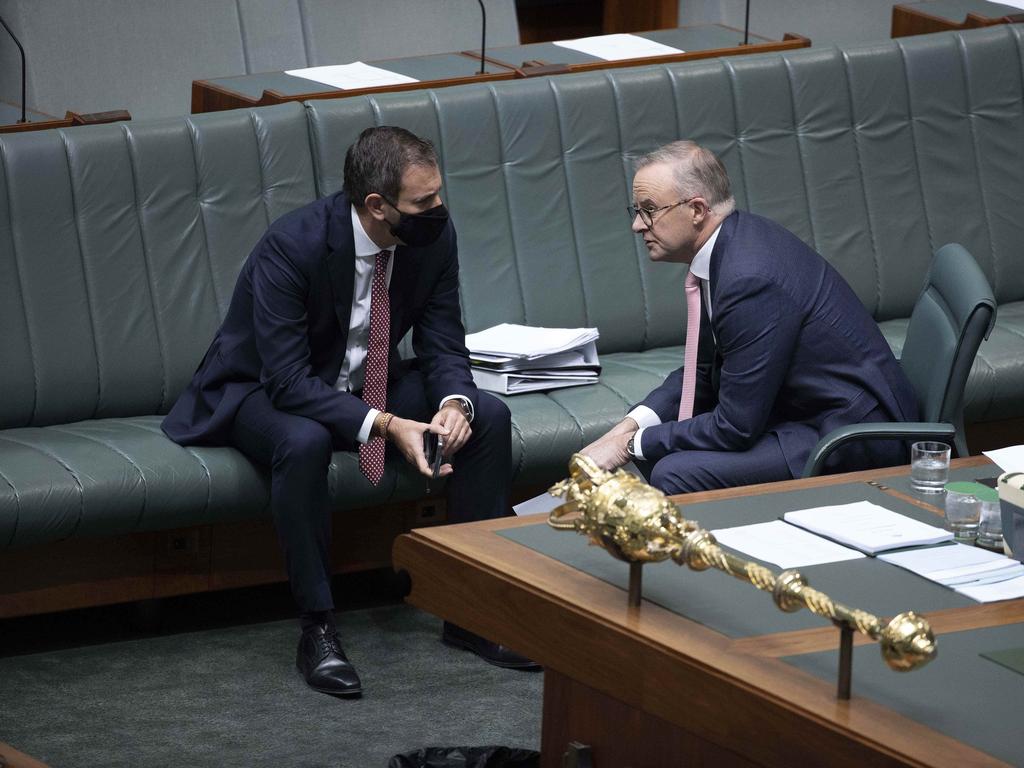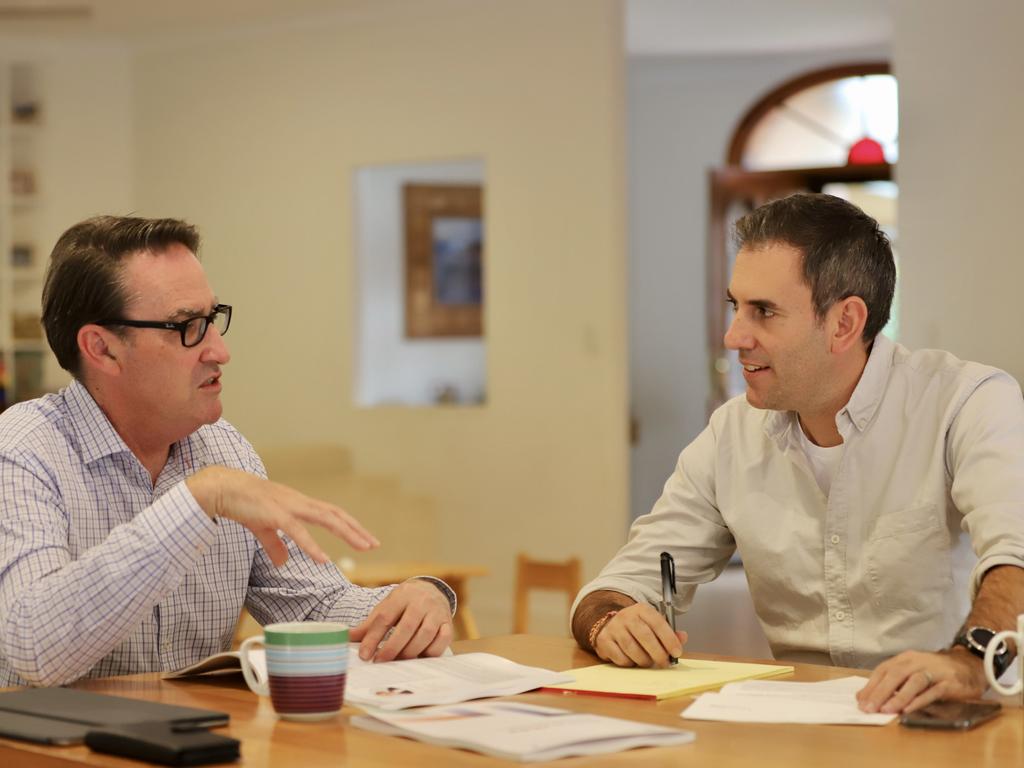Budget 2022: Get ready for some fiscal truth and consequences
A P-plate government banishes the recent past, just as the world becomes a more dangerous place | THE BUDGET: WHAT WE KNOW

If we are to learn anything about the debutant with an easy command of dreary content and fast-footed politics, it is likely to be his housekeeping and gardening skills. The Treasurer’s prime aim is to clear the junk of those evicted in May, bury its non-recyclables and reset the talk over the back fence to what kind of Australia the Albanese government is hoping to establish.
“October was always intended to be the beginning of that conversation and not the end,” Chalmers told reporters this week, a day after he returned from a quick-fire visit to Washington.
“One of the reasons why we decided to do a budget in October and not to wait between March and May, 14 months, is because (this) … is about implementing our election commitments. It’s about giving a more realistic picture of the fiscal situation, not just the size of the challenge that we confront but the shape of the challenge that we confront over the next four years and over the next 10 years. “And it will provide, I think, a baseline for a conversation about the future of the budget.”
Tuesday’s “baseline” is pretty crowded: Labor’s best opportunity to get rid of Coalition “waste and rorts”; to make good on Anthony Albanese’s election promises; and fund the accumulated post-poll priorities of a government that is clearly expanding its wings.
Veterans of the budget process say cabinet’s expenditure review committee has been rigorous and will present genuine savings in the budget; as all other financial managers have discovered, this trimming exercise presents a frontier that is never reached but must be pursued like a hound after a hare in the last at Dapto.
The final budget outcome for 2021-22 was an almost $50bn improvement on the underlying cash balance forecast in the Morrison government’s March budget and the pre-election update the following month. Inflation is boosting the budget’s bottom line.
Vagabond economist Chris Richardson calculates the five-year fiscal improvement, including last year’s bump, is worth $140bn. Debt as a proportion of the economy begins to look much better in coming years, the Rich Insight principal says.
The commodity cycle has been good for revenue, too; prices for iron ore and metallurgical coal have come down, but thermal coal and gas are cooking. Naturally, like his predecessors, Chalmers will want to keep some of this export dividend out of the hands of ministers whose terrain is “spends” not “saves” in capital-speak. “We will make changes to spending, we will start to make changes to multinational taxes, we will take a very responsible approach to the extra revenue that we get in the near-term from the prices that people are paying for our commodities,” Chalmers told reporters this week.

In March, on the eve of the federal campaign, with the Coalition trailing in the published and internal-party polls, Josh Frydenberg ignored Treasury’s advice and tried to buy insurance with some political retail therapy.
When the first iteration of the 2022-23 budget was launched, the economy was humming after Covid-19 restrictions were eased, while Russia’s assault on Ukraine the previous month inflamed energy and fuel prices. Inflation was out of the blocks and central banks were behind the play.
But Frydenberg and Scott Morrison needed to win over families and workers who told pollsters they were in the firm grip of “a full-blown cost-of-living crisis”, with rampant rises in transport and home-building costs.
Cash payments, tax cuts and a six-month halving in the fuel excise were End Times ploys. At the margin, these stimulated demand and may have brought forward to early May the Reserve Bank of Australia’s first cash rate increase since late 2010.
After six rate rises, with official interest rates moving from 0.1 per cent to 2.6 per cent, the central bank is not done with inflation; inflation is not done with us either.
On Tuesday, RBA deputy governor Michele Bullock said the central bank “expects to increase interest rates further over coming months”.
Be in no doubt, Bullock said, the central bank “is determined to do what is necessary to return inflation to target”. The headline rate may even push past 8 per cent, although the RBA and other key players do not see a wage-price spiral on the horizon, and hope for a return to the 2 to 3 per cent target band in 2024.
Cost-of-living relief for households in the budget must be modest, in line with recent International Monetary Fund warnings that urged governments to limit themselves to targeted and temporary transfers to the most vulnerable rather than costly and counter-productive measures such as indiscriminate excise cuts, price controls or export bans.
In any case, Chalmers will claim Labor’s new spending will have a shapeshifting aspect: not those clumsy-dumb moves by failed custodians that would bring on a “blunt and brutal” monetary response but “investments” in the productive capacity of the economy, which would not praise inflation but bury it.
Obviously there will be funding for the Prime Minister’s signature childcare, skills, medicines, green energy and manufacturing policies. Plainly, they all get baked into the spending profile for years so there must be hefty offsets, beyond scrapping dodgy Coalition programs.
“Taken together, our figuring anticipates minimal net impact on the underlying cash deficit from new policy,” Westpac’s Bill Evans and Andrew Hanlan said, taking Labor’s pre-event rhetoric at face value. “In that way, the government can demonstrate that they are not adding to the challenge to tame inflation – while at the same time delivering on key measures.”
Having shared a communal gasp with global fiscal and monetary titans in DC over Britain’s mayhem, Chalmers will be mindful of the omni-misery that congeals when economic policies get out of alignment and the front person is weightless. That’s why the Treasurer’s mien is restrained, not aloof, and he is deferring to the RBA on navigating the narrow road to avoid the recession the IMF says is likely to slam nations that produce one-third of the planet’s goods and services.
But it’s next May’s budget that will test Labor, when Chalmers will have to match grand intentions with a big bag of smart, swift and bold decisions.
As Billy Bragg, the Bard from Barking put it many years ago, which our one-time Tory-fighting national leader will appreciate, it’s not just the debut that counts but the “difficult second album” as well. For one, no matter the contested inheritance from the Coalition, the Albanese government owns budgeting from here; Labor has had a crack, scored some wins, changed the furniture, rebooted the vibe and learned to operate the machinery.
No more whining, just policy redesigning.
The budget is out of whack by around $40bn-$50bn. As Chalmers has said, we need to rebuild buffers for the next shock, master our debt. Sure, inflation will help a bit more than it will hinder, but that’s not a strategy: it’s settling, lazy, a trick of the dark.
“Defining a consistent medium-term policy framework for the post-pandemic world is crucial,” the IMF said in its latest fiscal monitor.
“Relying on repeated inflation surprises to reduce public debt is not a viable strategy and will lead to spending pressures (for example, wages and cost of services).”
Bear with the gilded econo-speak of the tax-exempt druids living the life, they are trying to help. “Reducing deficits, as many advanced and emerging markets are projected to do, is necessary to help tackle inflation and address debt vulnerabilities,” the IMF continues.
“Fiscal consolidation sends a powerful signal that policymakers are aligned in their fight against inflation, which, in turn, would reduce the size of required policy rate increases to keep inflation expectations anchored and keep debt servicing costs lower than otherwise.”
The IMF recognises that many countries are revamping their budget rules to impose discipline; Labor has ditched the Coalition’s “Cormann Rule” to cap tax. The IMF also notes that while “politically difficult, gradual and steady fiscal tightening is less disruptive than an abrupt fiscal pullback brought on by loss of market confidence.” Hello London!
Finally, in this tight environment, the multilateral lender advises members that you can’t have it all: “Prioritising policies and programs is increasingly vital.”
The Washington consensus won’t scare Chalmers, an orthodox operator, who is aware of the structural defects in the fiscal engine. He has been laying out in overdrive the pressures on the spending side: aged care, defence, disability services, health and debt-interest.
There hasn’t been much from the Treasurer on tax, but that must come, as his departmental secretary Steven Kennedy has argued: we need a better way to raise taxes, other than slugging young wage slaves (not yet into tax planning), and more revenue to pay for the bigger government the community desires.
The pandemic was a shock, but we’re living beyond our means as the world turns, so the Treasurer will be prosecuting the case and shaping his strategy for bringing spending and taxing into line, with due allowance for the state of the cycle, the terrors beyond our shores.
It’s a pity we didn’t talk about this during the campaign because the public would be better prepared; the major parties were preoccupied with other stuff, such as the Labor leader’s brain-fades and CV and the assassination of the “liar from the Shire”.
Chalmers knows any new tax manoeuvres will require exceptional marketing and a mandate from the people. Perhaps there’s a temptation for a “Generation Alpha child of Henry” tax review that, eventually, spits out options to present to voters at the next election?
Frankly, we know the score. Treasury is recalculating so-called “tax expenditures” and pumping out a white paper after last month’s Jobs and Skills Summit. We have a surplus of data and “learnings” but a deficit of straight talk, courage and attention.
The recent warm-up jog on the stage three tax cuts will have given the government a sense of where some voters stand, but the disengaged will be surprised to learn there’s a Victorian state election next month and NSW poll in March.
Wage inflation keeps pushing up the cost of the legislated tax-flattening from mid-2024, with Chalmers updating estimates for the first two years of stage three (which are sitting at the end of the four-year “forward estimates” in Tuesday’s numbers) to just under $41bn and the cost for the first nine years to $254bn. Oh dear, the horror, the horror.
Let’s not forget bracket creep, the thief that never sleeps, will surpass those tax cuts in year five and in 10 years the average personal income tax rate will be higher than it was before the introduction of the GST in 2000. Circumstances have changed, so make lemonade; ration the return of fiscal drag in a better way.
We know where the acute spending pressures are, with Bill Shorten revealing the National Disability Insurance Scheme will blow out by $8.8bn over the coming four years. The NDIS Minister has brought forward a review of the scheme that will cost $50bn by 2025-26. Debt interest is also a fast-rising cost, as are expenses for an ageing population, long-range submarines and the first part of decarbonisation.
Still, anyone who thinks fixing the budget is just about the spending side probably isn’t in tune with the community’s new social compact and is at peace with the easy time wealthy people enjoy in their tax shelters.
A leaky system needs repair, especially in areas where concessions are ridiculous when measured against the common good. We can raise tax in a better way that doesn’t punish aspiration, dissuade workforce participation or kill incentives to take risks in business.
The Treasurer declares he wants “a really important and productive national conversation about how we spend and invest on the things that our society values most”. May beckons. Hop to it, Jim: the slate is clean, the floor is yours, the clock is ticking.






Tuesday is Year Zero for Jim Chalmers and Labor, a new fiscal dawn, the point where a P-plate government banishes the recent past and takes full ownership of taxing, spending and inherited debt.